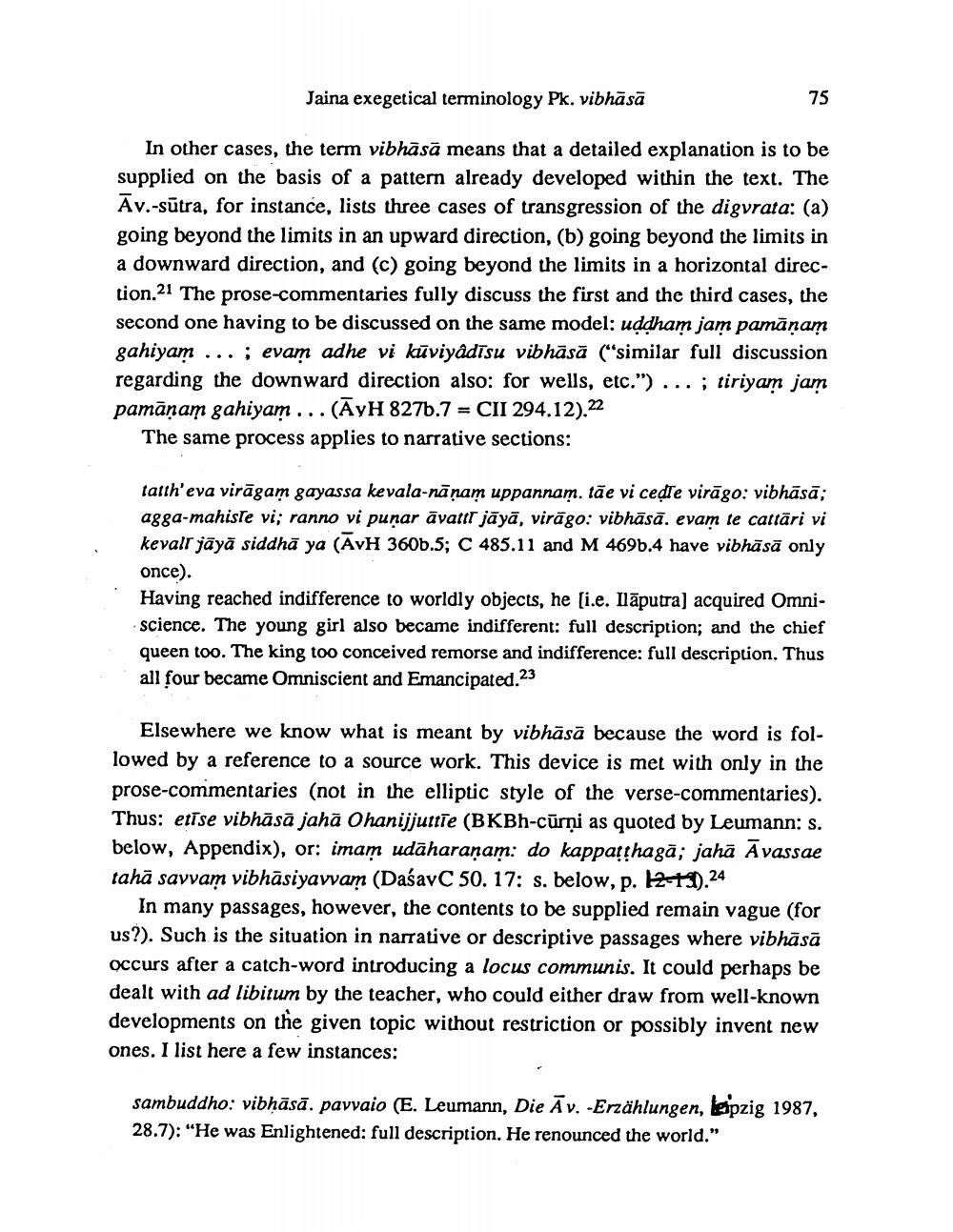Book Title: Jaina Exegetical Terminology Pk Vibhasa Detailed Exposition Author(s): Nalini Balbir Publisher: Nalini Balbir View full book textPage 9
________________ Jaina exegetical terminology Pk. vibhāsā In other cases, the term vibhāsā means that a detailed explanation is to be supplied on the basis of a pattern already developed within the text. The Av.-sūtra, for instance, lists three cases of transgression of the digvrata: (a) going beyond the limits in an upward direction, (b) going beyond the limits in a downward direction, and (c) going beyond the limits in a horizontal direction.21 The prose-commentaries fully discuss the first and the third cases, the second one having to be discussed on the same model: uddham jam pamānam gahiyam ...; evam adhe vi kūviyâdīsu vibhāsā (“similar full discussion regarding the downward direction also: for wells, etc.") ... ; tiriyam jam pamāṇam gahiyam ... (ĀyH 827b.7 = CII 294.12).22 The same process applies to narrative sections: tatth'eva virāgam gayassa kevala-nānam uppannam. tãe vi ceļie virāgo: vibhāsā; agga-mahiste vi; ranno vi punar āvatir jāyā, virāgo: vibhāsā. evam te cattāri vi kevalt jāyā siddhā ya (AvH 3600.5; C 485.11 and M 4696.4 have vibhāsā only once). Having reached indifference to worldly objects, he (i.e. Ilāputra) acquired Omniscience. The young girl also became indifferent: full description; and the chief queen too. The king too conceived remorse and indifference: full description. Thus all four became Omniscient and Emancipated.23 Elsewhere we know what is meant by vibhāsā because the word is followed by a reference to a source work. This device is met with only in the prose-commentaries (not in the elliptic style of the verse-commentaries). Thus: etise vibhāsā jahā Ohanijjuttīe (BKBh-cūrņi as quoted by Leumann: s. below, Appendix), or: imam udāharaṇam: do kappatthagā; jahā Āvassae tahā savvam vibhāsiyavvam (DaśavC 50. 17: s. below, p. 12-13.24 In many passages, however, the contents to be supplied remain vague (for us?). Such is the situation in narrative or descriptive passages where vibhāsā occurs after a catch-word introducing a locus communis. It could perhaps be dealt with ad libitum by the teacher, who could either draw from well-known developments on the given topic without restriction or possibly invent new ones. I list here a few instances: sambuddho: vibhāsā. pavvaio (E. Leumann, Die Āv. -Erzählungen, Leipzig 1987, 28.7): "He was Enlightened: full description. He renounced the world."Page Navigation
1 ... 7 8 9 10 11 12 13 14 15 16 17 18
